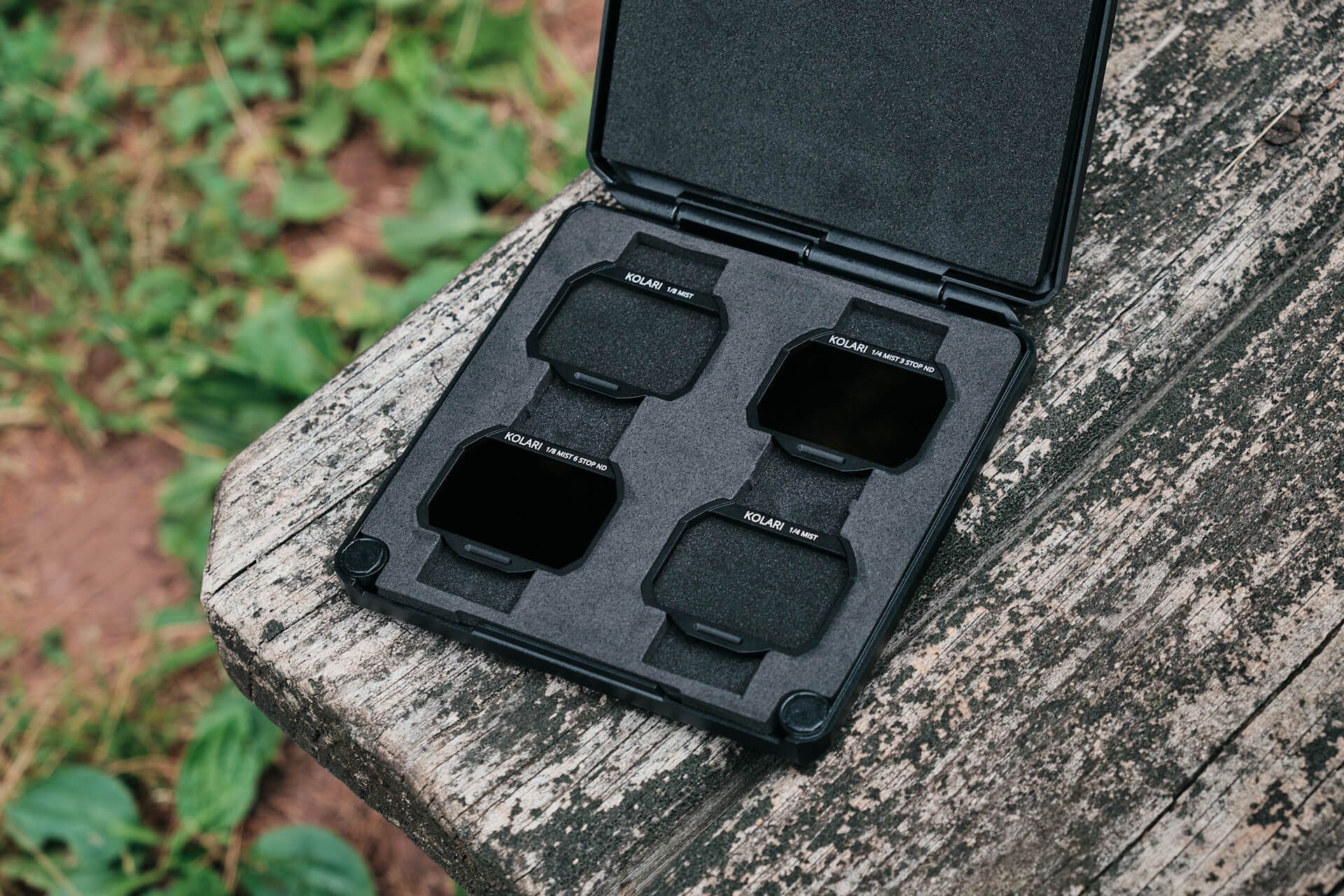As one of the most common types of filters on the market, you’ve likely heard of ND filters many times. But what exactly are ND filters, what do they do, and why would you want one?
Neutral Density filters are made up of a darkened piece of glass that acts like a pair of sunglasses for your camera. They prevent a certain amount of light from entering the camera’s sensor while maintaining color’s hues and tones. While lots of light is generally what you want in photography, there are times when it can be too much of a good thing, so to speak.
There are two main ways in which ND filters can be used:
Aperture
Many portrait photographers like to shoot as wide open as they can to get that dreamy shallow depth of field behind their subject. If your lighting conditions aren’t in favor of this, closing your aperture may be the only way to save the image. Using an ND filter, however, will reduce the amount of light in your image so you can still use your open aperture. It is possible to get great results on a bright, sunny day with a little help from an ND filter without having to sacrifice your creative vision.
Shutter Speed
Long exposures and action shots are two of the more common uses of ND filters. If you want to capture movement or motion blur while keeping static elements static, you will need to use a much longer shutter speed.
If you’re shooting landscapes, especially those with moving elements, an ND filter will allow you to slow your shutter speed to achieve that delicious motion blur without overexposing your images. If you’re after cascading waterfalls, milky oceans, or blurred cloud movement, this tool will be essential to your kit.
The ability to shoot in virtually any lighting conditions without having to compromise your camera settings is what the ND is all about. They are one of the many simple tools that can help to elevate your work, making it look more professional with minimal extra effort on your part. However, not all NDs are created equal. ND filters come in different styles and densities. Read on for a brief overview of the different options that are out there, and check out our other articles for more information.
First, we have fixed NDs. A fixed ND filter is dedicated to a single density. This means that it blocks a specific number of stops of light evenly across the whole image. You can find fixed NDs with densities ranging from 1-stop to 20-stops.
Different companies have different ways of naming their ND filters. Some use stops, some optical density, and some the ND factor. Looking at all the different numbers can be quite confusing. We go over what it all means and how they translate into one another in this article. Here at Kolari, we keep things simple and straightforward by using stops to name our Kolari Pro ND Filters.
Next, there are graduated ND filters. These differ from fixed NDs in that they reduce the amount of light only across half of the image. Graduated NDs can be particularly helpful when half of your image is much brighter than the other. In landscape photography, darkening your background, usually the sky, while keeping your foreground untouched can be incredibly valuable for scenes such as a sunset over the ocean.
Graduated NDs are less common now than they used to be. The graduated ND attempts to solve the exposure difference between the background and the foreground. This is less relevant nowadays as more modern cameras have built-in high dynamic range capabilities that allow them to evaluate the exposure of the whole scene more accurately without the use of a filter.
Lastly, we have VNDs, or variable NDs. As the name suggests, VNDs offer a variety of densities in one filter. These filters are essentially two pieces of glass put together which you can rotate to change the number of stops within the range dictated by your filter. These can be particularly useful for videographers, environments with quickly changing light conditions, or even just to minimize your equipment. To learn more about VND filters, how they work, and the best situations to use them, head over to this post.
The world of filters and photography can be overwhelming and confusing, especially to beginners. If you can relate to this, keep tuning in for more articles and tutorials to help you along your journey.
*Trying to shoot IR? Be careful–most NDs won’t work in infrared, but we’ve got one that does!
To stay up to date on new releases and updates, be sure to subscribe to our newsletter.
Visit our shop to learn more about our ND filters and other products to see if there’s something there for you.









